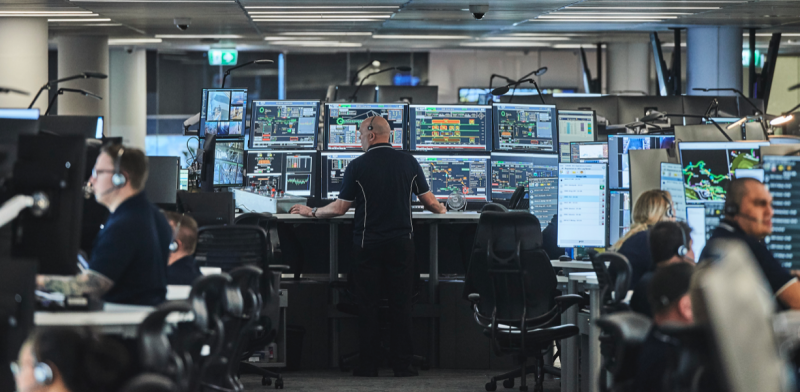- Thanks to a 72 per cent jump in the price of iron ore, Fortescue Metals (FMG) delivered a 74 per cent increase in revenue for the 2021 financial year
- After-tax profit also jumped 117 per cent, from US$4.7 billion (A$6.48 billion) to nearly US$10.3 billion (A$14.08 billion)
- Over the next year FMG is targeting shipments of 180 to 185 million tonnes, and capital expenditure of up to US$3.2 billion (A$4.38 billion)
- But iron ore prices have fallen 40 per cent over the past month as growth in Chinese exports falls
- Shares in Fortescue Metals are up 6.20 per cent to $21.24 at 12:28 pm AEST
Fortescue Metals (FMG) has continued its trend of record full-year results. However with weakening iron ore prices there are questions over how long the strong performance can last.
For the 12 months ending June 30, the world’s fourth-largest iron ore producer saw a two per cent bump in the volume of ore sold, from 177.2 million tonnes to 181.1 million tonnes. However, it was a 72 per cent jump in the price of the commodity — from US$78.62 (A$107.55) to US$135.32 (A$185.12) per dry metric tonne (DMT) — that helped overall revenue soar 74 per cent, from US$12.8 billion (A$17.51 billion) to almost US$22.3 billion (A$30.48 billion).
As a result, Fortescue’s underlying EBITDA margin for 2021 jumped 73 per cent to US$99 (A$135.43) per DMT, and after-tax profit rose 117 per cent, from US$4.7 billion (A$6.48 billion) to nearly US$10.3 billion (A$14.08 billion).
At the end of the year, Fortescue had US$6.9 billion (A$9.44 billion) in cash and US$4.3 billion (A$5.88 billion) in gross debt, or roughly US$2.7 billion (A$3.69 billion) in net cash.
With such strong results, Fortescue’s shareholders will receive a payout of $2.11 per share, to be paid on September 30, which takes the total dividends paid during the year to $3.58 per share or 80 per cent of the company’s full-year profit.
Over the next 12 month, Fortescue is targeting iron ore shipments of between 180 and 185 million tonnes, and capital expenditure of between US$2.8 billion (A$3.83 billion) and US$3.2 billion (A$4.38 billion).
That budget is expected to include US$1.1 billion (A$1.5 billion) for sustaining capital, US$200 million (A$273.6 million) for hub development, US$180 million (A$246.24 million) for exploration work, and between US$1.1 billion (A$1.5 billion) and US$1.4 billion (A$1.92 billion) for major projects such as Iron Bridge.
Fortescue CEO Elizabeth Gaines said of the results: “Guided by our unique culture and values, the Fortescue family has delivered a second consecutive year of record performance, with shipments, earnings and operating cashflow surpassing any year in Fortescue’s history.
“Through the Iron Bridge Magnetite project and Fortescue Future Industries, we are investing in the growth of our iron ore operations, as well as pursuing ambitious global opportunities in renewable energy and green industries.”
The two-year bull run for iron ore prices began at the end of 2019, when Brazilian miner Vale SA was involved in a tailings dam collapse, which killed 270 people, near the town of Brumadinho in the southeastern state of Minas Gerais.
Prices surged in the aftermath, hitting a peak of US$233 (A$318.75) a tonne in mid-May this year.
However, the market took a turn in July when China’s export growth suddenly slowed due to a resurgence in COVID-19 cases, hinting at a slowdown in the country’s industrial sector.
As a result, imports of iron ore fell for a fourth consecutive month, with just 88.51 million tonnes arriving in July. That amount represents a notable drop from 89.42 million tonnes in June, and a 21 per cent decline from a record 122.65 million tonnes in July last year.
In turn, the drop-off led to a 40 per cent slide in the price of iron ore over the past month.
That said, Nicholas Snowdon, head of base metals and bulks research at Goldman Sachs, believes a bull environment for iron ore is likely to remain for the time being.
“It would be wrong to say that the bull market for iron ore is on the cusp of ending,” he said at the Singapore Iron Ore Forum — part of Singapore International Ferrous Week — in early August.
“Importantly, even as China shows some signs of decelerating … the rest of the world and (developed market) steel demand dynamics are incredibly strong.”
Shares in Fortescue Metals are up 5.05 per cent to $21.01 at 11:05 am AEST.

